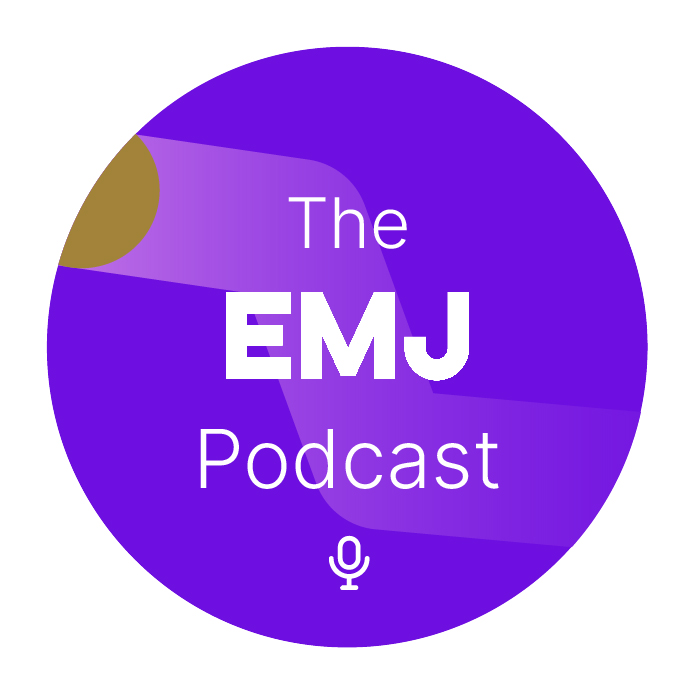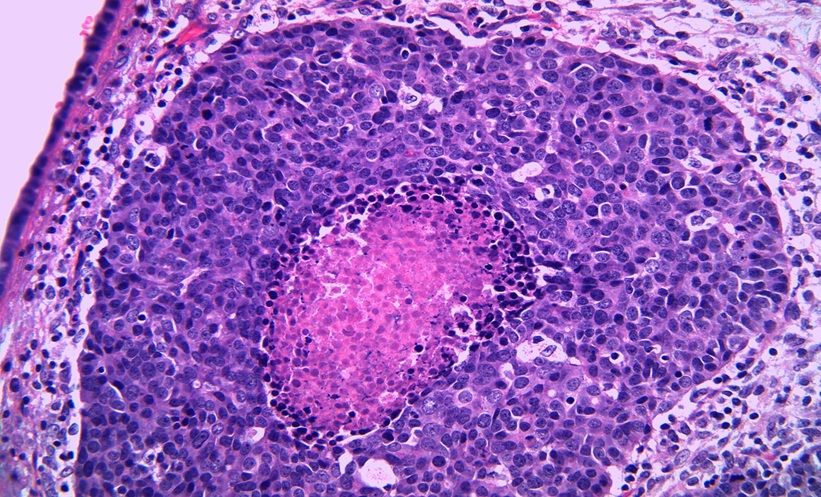The EMJ Podcast | Bonus Episode
This episode of the EMJ podcast delves into treatment options for patients with intermediate-risk (IR) non-muscle invasive bladder cancer (NMIBC). There are many challenges associated with selecting optimal treatment options. Rodolfo Hurle, Chief of the Bladder Unit at IRCCS Humanitas Research Hospital, Milan, Italy, offers his expert perspective on this pertinent topic, as well as insights into the current standard-of-care for patients with IR NMIBC.
Spotify | Apple | Amazon Music | Download MP3 (mp3, 09:04 mins)
This content was funded by Medac
Highlighting the risk factors that need to be taken into consideration during the substratification of patients with IR NMIBC, Hurle explains the different approaches to treatment, as well as the duration of maintenance instillations. The potential role of chemohyperthermia for patients with IR NMIBC are explored, with Hurle providing key takeaway insights to listeners.
Podcast Transcript
Cooper: Hello and welcome to this bonus episode of the EMJ podcast. My name is George Cooper. I’m a podcast host and medical writer. And today I am pleased to be bringing you a discussion on intravesical chemotherapy maintenance as a means to reduce the high rates of disease recurrence in patients with intermediate-risk non-muscle-invasive bladder cancer, abbreviated as IR NMIBC. This medical education activity is provided by EMJ and is supported by funding from medac.
Joining us for this podcast is a renowned expert in the field who’s going to offer his perspective on the need for stratifying patients with intermediate-risk NMIBC in subgroups to provide the best treatment, the current standard of care and choosing the best treatments for patients with intermediate-risk NMIBC. And the role of intravesical chemotherapy maintenance in patients with intermediate-risk NMIBC. It’s my pleasure to introduce Dr. Rodolfo Hurle, who is a urologist and head of the bladder unit at the Humanitas Research Hospital IRCCS in Milan. Dr. Hurle, how are you today?
Hurle: Thank you. I’m fine.
Cooper: Excellent. Right. We’ve got lots to cover in this very interesting topic. So let’s start with the basics. What are your first steps generally when deciding on treatment for patients with intermediate-risk NMIBC?
Hurle: First of all, I always start form a very careful examination of the histological report. It is also fundamental to be updated and consider the most recent scientific evidence from the literature.
Cooper: Now, physicians often find it difficult to make decisions regarding treatment options for patients with intermediate-risk NMIBC. Why, in your opinion, do you think that is the case?
Hurle: It is important to keep in mind that the intermediate-risk group is wide and very heterogeneous clinically. Since it includes all patients that do not fit the well-established criteria for being in the low-risk or high-risk group. That’s why choosing the best treatment for intermediate risk patients is often challenging.
Cooper: I see. As the intermediate-risk group is so wide and heterogeneous, as you said, do you see a need for stratifying patients with intermediate-risk NMIBC into subgroups?
Hurle: Since 2014, I have been using the subclassification by Kamat et al.1 which was recently updated2. In the last version, five risk factors have been identified:
- multifocal tumour
- early recurrence (that is, after less than one year)
- frequent recurrence (more than one per year)
- tumour size greater than 3 centimeters, and
- the failure of prior intravesical treatment.
In practical terms, if an intermediate-risk patient presents only one risk factor and has received early installation or is able to start treatment within three weeks from the TURBT, he or she should undergo six weekly induction cycles with mitomycin C followed by monthly instillation for six months in case of a complete response to the induction instillations. Whereas in a patient presenting with two risk factors, the maintenance instillation schedule should rather last for twelve months, in case of a complete response after the weekly induction instillations.
Cooper: OK, so how would you describe the current standard of care for patients with intermediate-risk NMIBC? And what, in your opinion, can be done to improve patient outcomes?
Hurle: I always try to start the induction installation within two weeks whenever it is possible. A study from the EORTC by Bouffioux and colleagues³ was published more than 20 years ago but is still valid: The study shows that a prompt start of the induction has a greater efficacy than a delayed one. A large randomized controlled trial from Friedrich and colleagues4 from Germany as well as a recent meta-analysis from Laukhtina and colleagues5 indicate that extended chemotherapy with a maintenance phase of 6-12 months can significantly reduce the recurrence risk compared to chemotherapy without maintenance in patients with intermediate-risk NMIBC. Therefore, I think that giving mitomycin C instillations as induction therapy only is not enough for intermediate-risk patients with 1 or more risk factors.
Cooper: Interesting. And I’m curious as to what’s your approach when choosing the right treatment in respect to duration is because we know that there’s so much variation, there’s so many differing opinions on this matter. So, in patients with intermediate-risk NMIBC, how do you go about choosing the duration for the treatment?
Hurle: Yeah, that’s a very important question. As I said, I think that induction installations should be followed by maintenance installations in all intermediate-risk patients with 1 or more risk factors. What may change is the duration of the maintenance: In my own practice, patients with one risk factor receive six months maintenance, in case of a prompt start of the induction installation and full response. While, in case of two risk factors, I suggest a 12-month maintenance schedule. When patients present more than 2 risk factors, immunotherapy with BCG should be considered. A similar risk-adapted approach has now been proposed by the International Bladder Cancer Group.2
Cooper: I see. It’s so great to hear you talk about this subject with authority because, as I said, there’s a lot of differing opinions out there and sometimes maybe lack of clear guidelines. So it’s great to have this conversation for fellow HCPs that are listening. And I was curious as to whether you feel there’s a role for chemo hypothermia, for example, HIVEC and mitomycin C combination in treatment of patients with intermediate-risk NMIBC? And if you believe there is, which subgroup do you think this kind of treatment could be applicable for?
Hurle: Yes, in intermediate risk patients with more than two risk factors, HIVEC can be considered as an alternative to BCG. 6 Also, HIVEC can play a role in patients already treated with BCG that have recurrence with no upgrading or upstaging. 7
Cooper: Fantastic. So, how would you, in your own words, summarise what we’ve discussed and what are your conclusions regarding the management of intermediate-risk NMIBC patients, and what the listeners can take home. In essence, what are the key points that you would like them to remember from this podcast?
Hurle: I have two key messages in conclusion. Regarding the management of intermediate-risk NMIBC patients, the most important key messages in my opinion are:
- Intermediate risk is a very heterogenous group of patients clinically. No one size fits all treatment recommendation is considered appropriate. Stratifying intermediate risk NMIBC into subgroups is necessary for selecting optimal risk-adapted treatment. 2
- The second key message: Mitomycin C is the most used intravesical chemotherapy for intermediate-risk NMIBC, but induction-only schedules are considered suboptimal for many patients with intermediate risk NMIBC,4,5 as reflected by the high recurrence rate in real-world data.
Cooper: Dr. Rodolfo Hurle, thank you very much for your time. It’s been a real pleasure speaking with you today.
Hurle: Thank you.
Cooper: And that concludes today’s discussion. Thank you very much to Dr. Rodolfo Hurle for joining us today and sharing his insights around intravesical chemotherapy maintenance to reduce the high risk of disease recurrence in patients with intermediate risk, non-muscle invasive bladder cancer. If you enjoyed this episode, please don’t forget to subscribe wherever you get your podcasts. We release new episodes every Friday, as well as plenty of bonus episodes like this one. Until next time, take care and goodbye for now.
References:
1. Kamat AM, et al. J Urol. 2014; 192(2): 305-15. PMID: 24681333.
2. Tan WS, et al. Eur Urol Oncol. 2022; doi: 10.1016/j.euo.2022.05.005. PMID: 35718695.
3. Bouffioux C, et al. J Urol. 1995; 153(3 Pt 2): 934-41. PMID: 7853578.
4. Friedrich MG, et al. Eur Urol. 2007; 52(4): 1123-29. PMID: 17383080.
5. Laukhtina E, et al. Eur Urol Focus. 2022; 8(2): 447-456. PMID: 33762203.
6. Guerrero-Ramos F, et al. World J Urol. 2022; 40(4): 999-1004. PMID: 35037963.
7. Plata A, et al. J Clin Med. 2021; 10(21): 5105. PMID: 34768625.








